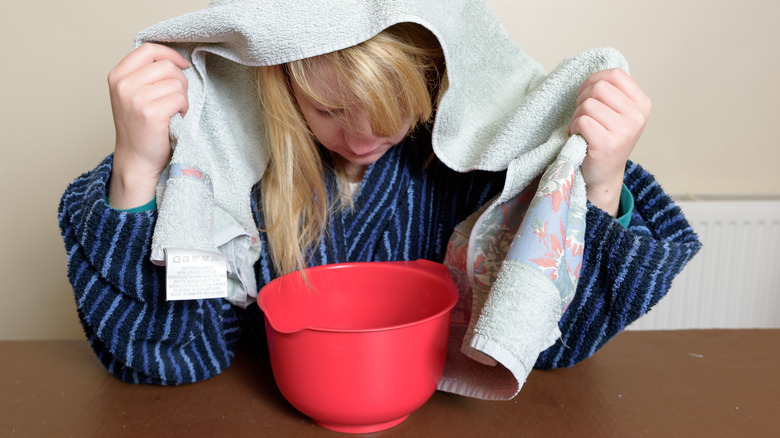Does Peppermint Oil Actually Help With A Cold?
Essential oils can be a beneficial addition to your health regimen and many of them are connected to addressing specific concerns. According to Healthline, peppermint oil is one that has been linked to helping with congestion and bringing down a fever due to its menthol properties. A 2015 study published in the Arabian Journal of Chemistry found that it has antibacterial properties.
But just because peppermint oil is a natural aid doesn't mean that it's safe for all ages. Peppermint oil shouldn't be given to kids age 6 and younger. A 2007 study published in American Family Physician found that the menthol in peppermint oil can cause babies to develop jaundice and can also cause children to stop breathing.
If you're suffering from a seasonal cold virus and not getting any relief, it's worth giving peppermint oil a try to clear the sinuses and even shorten the duration of the cold.
How to use peppermint oil for colds
There are several different ways to use peppermint oil to treat cold symptoms. Healthline recommends inhaling it to help reduce pain and inflammation. If your cold or fever causes headaches, you can dab diluted drops of peppermint oil on your temples for relief. The National Association for Holistic Aromatherapy (NAHA) says there are two ways to inhale. The first way is to dab 2 to 4 drops onto a tissue or cotton ball, cup it in the palm of your hands, and inhale. The other method is to add 3 to 5 drops into a different bottle, shake it up, then inhale.
Steam inhalations are also particularly useful if you have a cold, flu, congestion, or bronchitis. To make a steam inhalation, add 6 drops of oil to every 1 ounce of boiling water (2 to 3 drops for kids). Pour the water into a bowl and set it on a table. Cover your head with a towel, lean over the bowl, and breathe through your nose. Make sure to keep your eyes closed. If you prefer a steam bath, add 2 to 12 drops of essential oil plus one teaspoon of dispersing agent into a bath.


